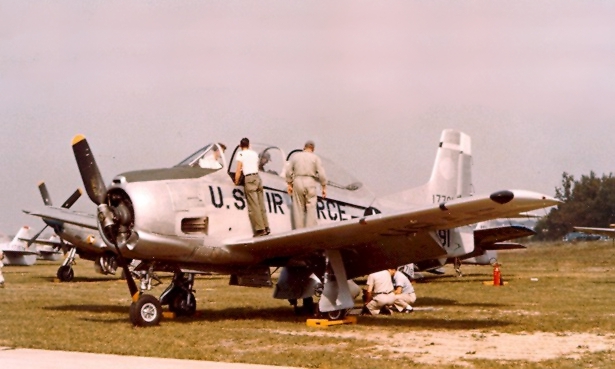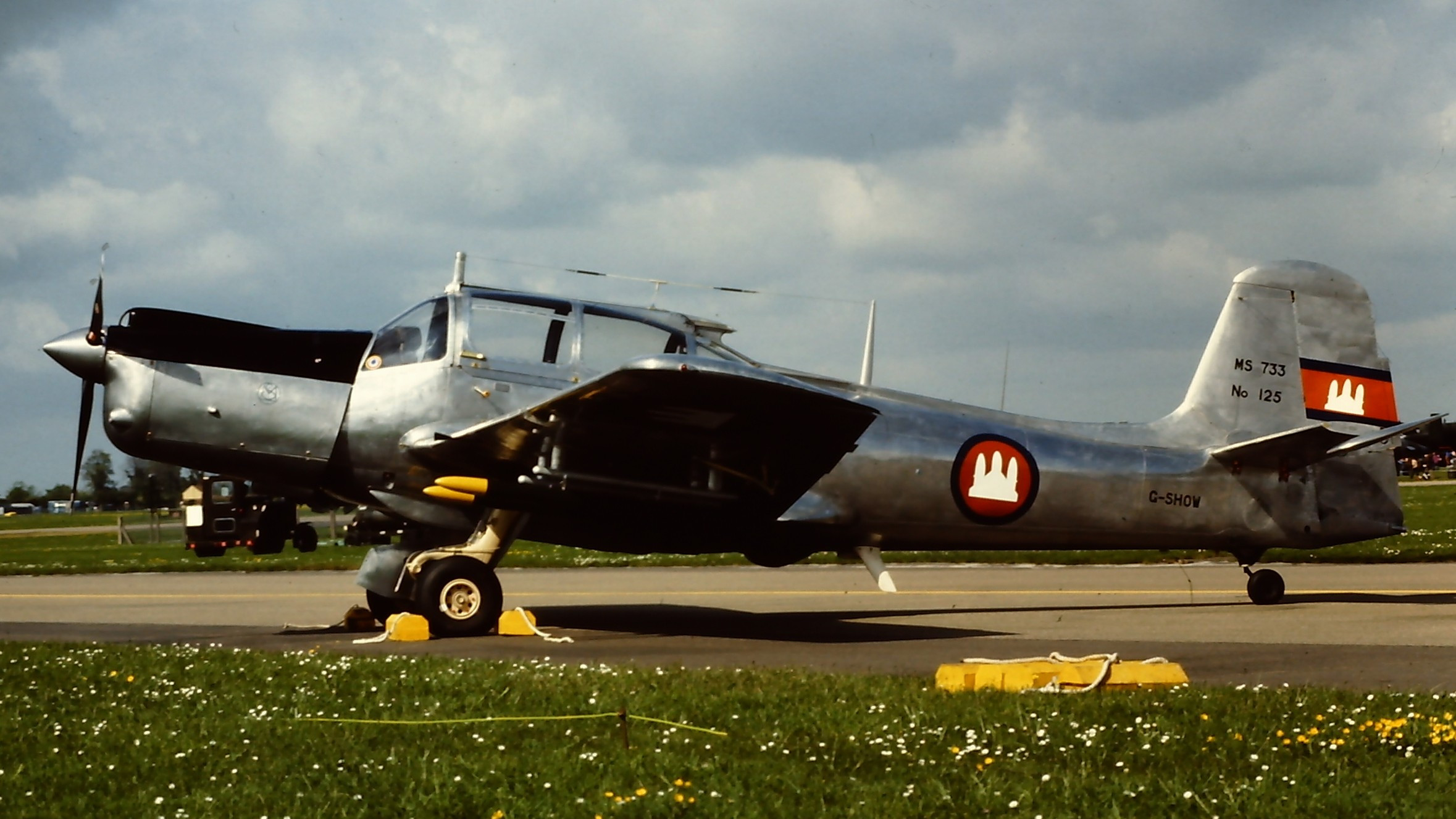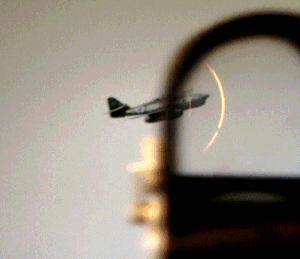|
Morane-Saulnier Alcyon
The Morane-Saulnier Alcyon (en: Kingfisher) is a two or three-seat basic training monoplane designed and built in France by Morane-Saulnier. Design and development Designed as a basic trainer for the French military the prototype MS.730 first flew on 11 August 1949. The prototype was a low-wing cantilever monoplane with a fixed tailwheel landing gear and powered by a Mathis 8G.20 inverted V8 engine. The engine was replaced with a German war-surplus Argus As 10 and the prototype flew again in November 1949 as the MS.731. Two further prototypes were built and flown in 1951 designated ''MS.732'', they were each powered by a Potez 6D 02 engine and the original fixed landing gear of the prototype was replaced with retractable main wheels. Operational history The production version that followed was designated the MS.733, with five pre-production aircraft and 200 production aircraft. The aircraft were delivered to the French Navy (40), the French Air Force (145) and the Cambodian A ... [...More Info...] [...Related Items...] OR: [Wikipedia] [Google] [Baidu] |
Coventry Airport
Coventry Airport is located south-southeast of Coventry city centre, in the village of Baginton, Warwickshire, England. The airport is operated and licensed by Coventry Airport Limited. Its CAA Ordinary Licence (Number P902) allows flights for the public transport of passengers or for flying instruction. Since October 2017, Coventry Airport has been undergoing transition to a general aviation aerodrome offering a flight information service. History First opened in 1936 as Baginton Aerodrome, Coventry Airport has been used for general aviation, flight training, and commercial freight and passenger flights, as well as being a World War II fighter airfield. In 1982, Pope John Paul II celebrated Mass with a crowd of around 350,000 on his only UK visit. In 1994–5, it became a focus for animal rights campaigners who protested at the export of live animals from the airport as freight. From 2004 to 2008, Thomsonfly operated scheduled jet passenger flights from temporary hub faci ... [...More Info...] [...Related Items...] OR: [Wikipedia] [Google] [Baidu] |
T-28 Trojan
The North American Aviation T-28 Trojan is a radial-engine military trainer aircraft manufactured by North American Aviation and used by the United States Air Force and United States Navy beginning in the 1950s. Besides its use as a trainer, the T-28 was successfully employed as a counter-insurgency aircraft, primarily during the Vietnam War. It has continued in civilian use as an aerobatics and warbird performer. Design and development On September 24, 1949, the XT-28 (company designation NA-159) was flown for the first time, designed to replace the T-6 Texan. The T-28A arrived at the Air Proving Ground, Eglin Air Force Base, Florida, in mid-June 1950, for suitability tests as an advanced trainer by the 3200th Fighter Test Squadron, with consideration given to its transition, instrument, and gunnery capabilities. Found satisfactory, a contract was issued and between 1950 and 1957, a total of 1,948 were built. Following the T-28's withdrawal from U.S. military service, a numb ... [...More Info...] [...Related Items...] OR: [Wikipedia] [Google] [Baidu] |
Low-wing Aircraft
A monoplane is a fixed-wing aircraft configuration with a single mainplane, in contrast to a biplane or other types of multiplanes, which have multiple planes. A monoplane has inherently the highest efficiency and lowest drag of any wing configuration and is the simplest to build. However, during the early years of flight, these advantages were offset by its greater weight and lower manoeuvrability, making it relatively rare until the 1930s. Since then, the monoplane has been the most common form for a fixed-wing aircraft. Characteristics Support and weight The inherent efficiency of the monoplane is best achieved in the cantilever wing, which carries all structural forces internally. However, to fly at practical speeds the wing must be made thin, which requires a heavy structure to make it strong and stiff enough. External bracing can be used to improve structural efficiency, reducing weight and cost. For a wing of a given size, the weight reduction allows it to fly slower ... [...More Info...] [...Related Items...] OR: [Wikipedia] [Google] [Baidu] |
Morane-Saulnier Aircraft
Aéroplanes Morane-Saulnier was a French aircraft manufacturing company formed in October 1911 by Raymond Saulnier (1881–1964) and the Morane brothers, Léon (1885–1918) and Robert (1886–1968). The company was taken over and diversified in the 1960s. History Model development Morane-Saulnier's first product was the Morane-Borel monoplane, a development of a monoplane design produced by the Morane company (sometimes called Type A) in partnership with Gabriel Borel). Using a wing-warping mechanism for control, this was the type in which Jules Védrines won the Paris-Madrid race on May 26, 1911. Morane-Saulnier's first commercially successful design was the Morane-Saulnier G, a wire-braced shoulder-wing monoplane with wing warping. This led to the development of a series of aircraft and was very successful in racing and setting records. The Type G was a 2-seater, and was reduced slightly in size to produce the Morane-Saulnier H, a single-seater, and was given a faired ... [...More Info...] [...Related Items...] OR: [Wikipedia] [Google] [Baidu] |
1940s French Military Trainer Aircraft
Year 194 ( CXCIV) was a common year starting on Tuesday (link will display the full calendar) of the Julian calendar. At the time, it was known as the Year of the Consulship of Septimius and Septimius (or, less frequently, year 947 ''Ab urbe condita''). The denomination 194 for this year has been used since the early medieval period, when the Anno Domini calendar era became the prevalent method in Europe for naming years. Events By place Roman Empire * Emperor Septimius Severus and Decimus Clodius Septimius Albinus Caesar become Roman Consuls. * Battle of Issus: Septimius Severus marches with his army (12 legions) to Cilicia, and defeats Pescennius Niger, Roman governor of Syria. Pescennius retreats to Antioch, and is executed by Severus' troops. * Septimius Severus besieges Byzantium (194–196); the city walls suffer extensive damage. Asia * Battle of Yan Province: Warlords Cao Cao and Lü Bu fight for control over Yan Province; the battle lasts for over 100 day ... [...More Info...] [...Related Items...] OR: [Wikipedia] [Google] [Baidu] |
List Of Military Aircraft Of France
France has used many military aircraft both in its air force, the Armée de l'Air, and other branches of its armed forces. Numerous aircraft were designed and built in France, but many aircraft from elsewhere, or part of joint ventures have been used as well. Lighter-than-air aircraft such as dirigibles and balloons found use starting in the 19th century used mainly for observation. The advent of World War I saw an explosion in the number France's aircraft, though development slowed after. While having many promising designs in development in the 1930s, government wrangling delayed development enough there was little available at the out break of World War II. The armistice in 1940 marked a low point, with Vichy France being allowed only reduced numbers and development halting. Many French aircraft were captured and used by Nazi Germany and its allies. Some aircraft that did escape served with the Allies or Free French forces, who also used many other types of allied aircraft. The ... [...More Info...] [...Related Items...] OR: [Wikipedia] [Google] [Baidu] |
Moroccan Air Force
The Royal Moroccan Air Force ( ar, القوات الجوية الملكية; ber, Adwas ujenna ageldan; french: Forces Royales Air) is the air force of the Moroccan Armed Forces. History The Moroccan air force was formed on 14 May 1956 as the Sherifian Royal Aviation (). Its modern installations and bases were inherited from France (Meknes, Rabat in tandem with the United States, Marrakech, Kenitra, Ben Guerir, Boulhault, Nouasseur, and Sidi Slimane), and later Spain (Laayoune). In the 1950s and 1960s, American aircraft were deployed in several of these bases, including nuclear bombers from the Strategic Air Command. The first aircraft of this newly formed air force were 16 Morane-Saulnier Alcyons, five Max Holste MH.1521 Broussard transport aircraft, one Aérospatiale Alouette II, and one Bell H-13 Sioux. In 1961, it obtained 12 Mikoyan-Gurevich MiG-17 fighters, two Mikoyan-Gurevich MiG-15UTI trainers and either two or four Ilyushin Il-28 bombers from the Soviet Union. E ... [...More Info...] [...Related Items...] OR: [Wikipedia] [Google] [Baidu] |
Khmer Air Force
The Khmer Air Force (french: Armée de l'air khmère; AAK), commonly known by its americanized acronym KAF (or KhAF) was the air force component of the Khmer National Armed Forces (FANK), the official military of the Khmer Republic during the Cambodian Civil War between 1970 and 1975. History Although an air wing for the fledgling Khmer Royal Army (ARK) was first planned in 1952, it wasn't until April 22, 1954, however that the Royal Khmer Aviation (; AVRK) was officially commissioned by Royal decree. Commanded by Prince Norodom Sihanouk's personal physician, Colonel Dr. Ngo Hou, and known sarcastically as the "Royal Flying Club",Conboy and Bowra, ''The War in Cambodia 1970-75'' (1989), p. 19. the AVRK initially operated a small fleet of four Morane-Saulnier MS 500 Criquet liaison aircraft, two Cessna 180 Skywagon light utility aircraft, one Cessna 170 light personal aircraft, and one Douglas DC-3 modified for VIP transport. At this stage, the AVRK was not yet an independent se ... [...More Info...] [...Related Items...] OR: [Wikipedia] [Google] [Baidu] |
Cambodian Air Force
The Royal Cambodian Air Force ( km, កងទ័ពជើងអាកាស, Kângtoăp Cheung Akas, ) is the branch of the Royal Cambodian Armed Forces which is charged with operating all military aircraft in Cambodia. Organisation The Royal Cambodian Air Force is commanded by Lieutenant General Soeung Samnang, who has four deputy commanders beneath him. The Air Force itself is under the jurisdiction of the Ministry of National Defence. Air Force headquarters are located at Phnom Penh International Airport and is still sign posted Pochentong Air Base. The only operational aircraft at Pochentong Air Base are from the VIP squadron. Maintenance of aircraft and helicopters is also at Pochentong. The airworthy Z-9 and Mi-17 helicopters from the helicopter squadron are based at Phnom Penh International Airport and Siem Reap International Airport. History In September 1993, a new air arm, the Royal Cambodian Air Force, RCAF, was formed. Among its staff were included many officers ... [...More Info...] [...Related Items...] OR: [Wikipedia] [Google] [Baidu] |
MAC 1934
The MAC 1934 is a machine gun of French origin. It is effectively the aircraft variant of the Reibel machine gun. History In 1934, the ''Manufacture d'Armes de Châtellerault'' (Châtellerault weapons manufacturing company, often shortened to ''MAC'') completed the development of the MAC 1934 machine gun to replace the Darne mod. 1933 machine gun aboard aircraft of the ''Armée de l'Air''. Essentially a faster-firing variant of the mitrailleuse mle 1931, and using the same 7.5 mm MAS ammunition, the MAC 34 worked by gas operation and was fed from drum magazines. Two main variants, sharing common parts, were introduced: * the ''type tourelle'' (turret model), fed from 100-round replaceable magazines, was used in flexible mountings, where it was generally fitted with an Alkan 1935 reflector gunsight. * the ''type aile'' (wing model) fed from a 300- or 500-round drum magazine, was used for fixed mountings. Because it used an open bolt action, the MAC 34 could not be fitted with ... [...More Info...] [...Related Items...] OR: [Wikipedia] [Google] [Baidu] |
Reflector Sight
A reflector sight or reflex sight is an optical sight that allows the user to look through a partially reflecting glass element and see an illuminated projection of an aiming point or some other image superimposed on the field of view. These sights work on the simple optical principle that anything at the focus of a lens or curved mirror (such as an illuminated reticle) will appear to be sitting in front of the viewer at infinity. Reflector sights employ some sort of "reflector" to allow the viewer to see the infinity image and the field of view at the same time, either by bouncing the image created by lens off a slanted glass plate, or by using a mostly clear curved glass reflector that images the reticle while the viewer looks through the reflector. Since the reticle is at infinity it stays in alignment with the device to which the sight is attached regardless of the viewer's eye position, removing most of the parallax and other sighting errors found in simple sighting devices. ... [...More Info...] [...Related Items...] OR: [Wikipedia] [Google] [Baidu] |

_(32525772936).jpg)





